
From Evolution Theory to a New Creation Theory -- Errors in Darwinism and a Proposal from Unification Thought

Under the Supervision of Sang Hun Lee
|
|
From Evolution Theory to a New Creation Theory -- Errors in Darwinism and a Proposal from Unification Thought |
|
|
|
Under the Supervision of Sang Hun Lee |
II. The Contemporary Theory of Evolution (NeoDarwinism) Is Wrong
As soon as Darwin published On The Origin of Species, he suffered a fierce attack from the Christian world. Yet, Darwinism gradually prevailed as a scientific theory, coming to be accepted by the general public. As time went on, Darwinism seemed to have established an unassailable position, especially with the development of synthetic theory in the 1940's. In 1980's, however, there arose an atmosphere of reexamination of Darwinism. Thus, let us deal with some of the representative points singled out as problems in Darwinism.
1. The Nonexistence of the Fossils of Intermediates: The archaeopteryx has turned out not to be an intermediate.
A big mutation is known to be harmful and often fatal to living beings. Therefore, it is considered that small mutations occurred consecutively, and that living beings gradually evolved by natural selection. Accordingly, consecutive fossils of living beings should be discovered that would show the footsteps of evolution from one species to another. However, in reality hardly any fossils of intermediates have been found. The lack of fossils to serve as evidence for the existence of such intermediate living beings is expressed by the expression "missing link."
In the theory of evolution, it is believed that in the process whereby invertebrates evolved into vertebrates, the former passed through primitive stages of vertebrates, but no evidence for such a view is recorded in fossils.
There is a gap of about one hundred million years between the early Cambrian era, from which numerous fossils of sponges, coelenterates (coral), echinoderms (brittle stars), mollusks (snails), and arthropods (trilobites) are found, and the later Ordovician period, from which the fossils of the first animal that really possessed the features of a fish as a vertebrate appeared. No fossils of an intermediate type have been found (Ommaney 1964, 60) (see Fig. 9). No matter how skillfully one might devise hypotheses, it remains extremely difficult to account for this big gap through the theory of evolution.
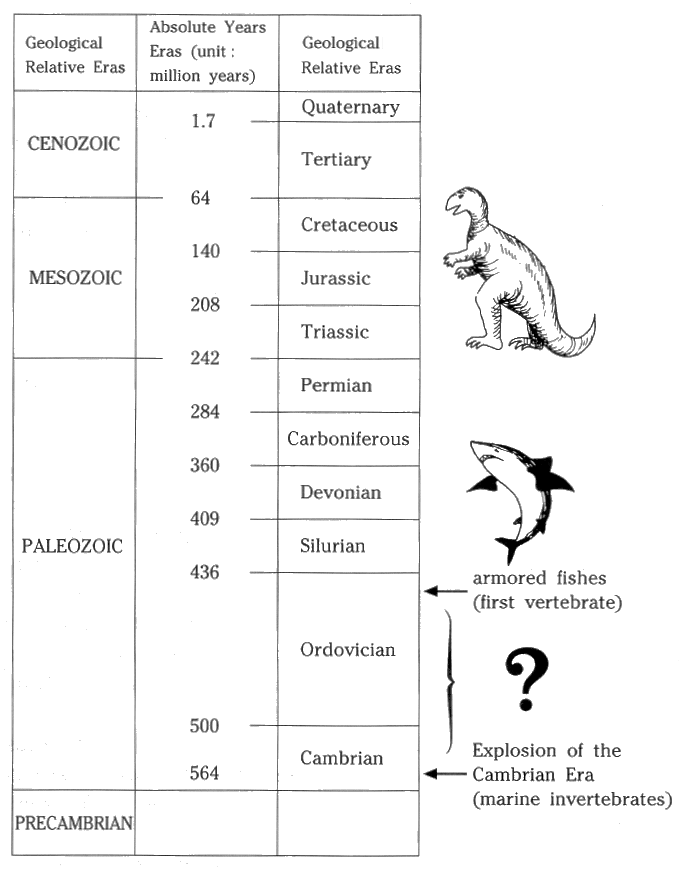
Fig. 9: An Example of Missing Links
As for the archaeopteryx, which has been mentioned as an example of fossils of intermediates just on the verge of changing from reptiles to birds, recently it is considered that the archaeopteryx possibly is not an intermediate but simply a kind of unusual bird existing in those days (Hitching 1982, 21-23).
It was reported in 1986 (Takei 1987, 16) that the fossil of a bird was found in Texas that is considered to have lived 150 million years ago-or 75 million years prior to the archaeopteryx. Thus, it is now becoming impossible to assert decisively that the archaeopteryx was an intermediate species changing from reptile to bird.
The nonexistence of fossils of intermediates is the fundamental problem of the theory of evolution.
2. A Difficulty in Explaining the Spontaneous Generation of Life:
How was the elaborate chemical factory within the cell generated?
Evolutionists explain the process of the generation of life as follows:
The primitive atmosphere covering the primitive earth consisted of methane (CH,), ammonia (NH,), steam (HZO), hydrogen (HZ), nitrogen (NZ), and so on. When ultraviolet rays from the sun, natural electric discharge (lightning), and other phenomena worked on the primitive atmosphere, amino acids, sugar, nucleic acid bases, organic acids, and so on, were generated. These materials dissolved in rainwater, and rainwater containing them fell on the primitive sea, and those materials were accumulated to form a "soup of organic materials." In this soup, amino acids combined to form protein; nucleic acids combined with sugar and phosphoric acids to form nucleotides; and nucleotides combined to nucleic acids-ribonucleic acid (RNA) and deoxyribonucleic acid (DNA). Eventually a primitive cell membrane was generated, and a primitive cell, consisting of nucleic acids, protein, and membrane, was formed. Then evolution took place from the prokaryotic cell to the eukaryotic cell; and finally, when the cell performed cell division, it evolved into a multicellular being.
Through experiments conducted by S. L. Miller (1930- ) in 1953, it has been confirmed that amino acid can be generated through a discharge of electricity into a gas mixture of steam, hydrogen, ammonia, and methane; furthermore, we now know that other chemical compounds also can be synthesized the same way. Nevertheless, the process leading up to that stage is relatively simple, resulting in the formation of organic matter, which is the material of living beings. However, the formation of organic matter is not directly connected with the generation of life. In order for organic matter to be connected with the generation of life, nucleic acids (RNA and DNA) and protein (enzymes) need to be formed-and it is precisely the process leading up to that stage that is the problem (see Fig. 10).
There is an incredible leap in saying that nucleic acids and protein can be formed from the soup of organic matter. As is widely pointed out, can any particular protein and nucleic acids be accidentally generated ? No; they absolutely cannot. Concerning the probability of protein being obtained accidentally, D. T. Gish explains the following
The amino acid sequence of a protein containing only 12 different kinds of amino acids, with a molecular weight of 34,000 (roughly about 340 amino acids, a relatively simple protein) could be arranged in 103'" different ways! In other words, there could have arisen on the primitive earth 103°° different protein molecules of molecular weight 34,000 composed of the same 12 amino acids. If we had only one each of these molecules, the total weight would be about lOzfl" grams, but the total weight of the earth is only lOz' grams! If the whole universe was solid with protein of this kind, one would be unable to find even one each of these molecules ! (Gish 1972, 24)
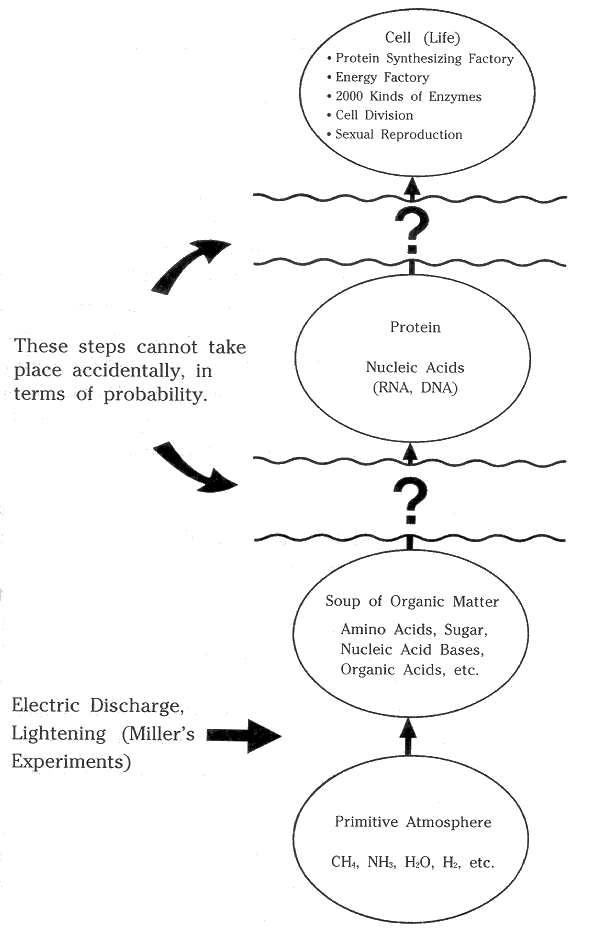
Fig. 10: Mysteries in the Process of the Spontaneous Generation of Life
In addition, there is the following problem. Nucleic acids (DNA and RNA) and protein can be synthesized in the cell ; however, this is an extremely complex process. Furthermore, within a cell, there is such a relationship that, while protein can be formed under the direction of nucleic acids, it so happens that nucleic acids cannot be formed unless protein (enzymes) exists. Yet, in the primitive ocean, protein had to be formed without nucleic acids, and nucleic acids had to be formed without protein. Evolutionists assert that these things occurred by accident, but actually, it is totally impossible for that to happen (Hitching 1982, 47-49).
Boris Mikhaylovich Myednykov (1932- ), a Soviet biologist and evolutionist, definitely states that "within the cell, nucleic acids and protein are . . . synthesized through an extremely complex process. The probability of such products coming into being by chance is practically zero" (Myednykov 1982, 41). Nevertheless, in order to hold fast to his evolutionist position, he said, "Possibly life may have originated in this way by stages, with each stage enhancing the probability of the next stage. I would basically accept this position, because, after all, there is no other solution" (Myednykov 1982, 42). He reasoned that, no matter how impossible that may have been in terms of probability, once the process for forming a nucleic acid and protein had been attained, the probability of the next process would become higher. Thus, he concluded that probability may have been gradually enhanced. However, that was just a desperate attempt to escape from the plight in which he found himself.
Next, in order for a cell (or a living being), which contains protein and nucleic acids, to be made, there has to be an even greater leap. Inside the cell there is an elaborate chemical factory the likes of which can hardly be found in human society. How such a factory was made is a complete mystery. Consider, for example, the following problems
i) How did the system of synthesizing protein originate? (This systems consists of DNA, RNA, ribosome, and so on.)
ii) How did the mechanism of photosynthesis, which is the source of energy for living beings, and the mechanism of oxygen respiration originate?
iii) How did about 2,000 kinds of main enzymes, which are necessary for a living being, originate?
iv) How did the mechanism of cell division originate? v) How did sexual reproduction originate?
None of these can be considered to have been generated spontaneously. As to the question of how sexual reproduction originated in living beings, no valid explanation has been given in the theory of evolution. Seen merely from the viewpoint of multiplication, sexual reproduction is actually much less advantageous and efficient than asexual reproduction. The only advantage of sexual reproduction is that it enables better adaptation to a changing environment because, since the genes of different sexes are mixed, a wider variety can be produced than if reproduction were asexual. In summary, "among the most intriguing and difficult problems in evolutionary theory are those of the origin and maintenance of recombination and sexual reproduction" (Futuyma 1986, 279).
3. The Character of Mutation
Even though mutation took place, fruit flies remained fruit flies.
Mutation, which is regarded as the cause of evolution, does not bring about a new shape or a new function all at once but it is only a minute, random, directionless change. But in order for a living being to evolve, "a directional mutation, rather than a random, directionless mutation, must occur accumulatively and in a rather short period of time, considering the nature of the history of evolution," as Kinji Imanishi, a Japanese anthropologist, states (Imanishi 1976, 24). The reason is that an intermediate, incomplete, inefficient state prior to a new structure or function must quickly be traversed. It is utterly unthinkable that the forms and functions of living beings would undergo changes through "a slow, easygoing process in which mutation starts with a certain individual within a species, is transmitted hereditarily to the next generation through sexual reproductive action, and gradually spreads within the species through differential reproduction," as evolutionists assert (Imanishi 1976, 25).
The next point is that mutation is generally harmful and destructive to living beings. Dobzhansky said, "Mutation is a destructive, not a creative, force. Some mutations occur naturally, and those are probably the result of cosmic radiation" (Dobzhansky 1960, 39). Mayr also said, "It can hardly be questioned that most visible mutations are deleterious" (Mayr 1963, 174).
How could one explain the formation of a new species through mutation, which has such features as mentioned above ? Geneticists have tried to cause mutation in fruit flies by irradiating them with x-rays; however, the changes that occurred as a result were only loss of wings, different color of eyes, and so on-which are nothing but changes in shape, or deformities, within the confines of the species. Even though x-rays or gamma rays have been applied to fruit flies for several decades, even until today, in the end those fruit flies have remained fruit flies. Up to the present time, there has not been a single case of a change of species confirmed through experimentation or observation.
The alleged new species of primrose that De Vries thought he had "discovered" were not new species at all but rather mere variations of the same species.
What Darwin observed in the Galapagos Islands was only the changes in the bills and wings of the birds. From that observation, he drew the conclusion "these species are changing," and finally came to the conclusion that humankind evolved from the ape. This is nothing but extrapolation and magnification of his observations. It is similar to what Karl Marx did: He observed the conflict between capitalists and laborers in capitalist society, extrapolated his observation to the whole of human history, and concluded that "human history is the history of class struggle."
4. Can Natural Selection Create a New Species?
Did the front legs of a mouse evolve into the wings of a bat?
The theory of natural selection explains that, out of a wide range of variations of living beings, the advantageous ones, that is, those better adapted to exist, will be selected, and the less advantageous ones will perish. It has now been made clear that the variation with which evolution is connected must be "mutation." Yet, as has been seen, mutation is random, directionless, and mostly harmful and destructive. How can a complex and high-level new species be formed through natural selection based on mutation, which has the features described above?
Concerning the character of natural selection, Darwin said the following: "Natural selection can act only by the preservation and accumulation of infinitesimally small inherited modifications, each profitable to the preserved beings" (Darwin 1968, 142). A big change occurs through this accumulation of very small changes, he asserts. And he stated, "If it could be demonstrated that any complex organ existed, which could not possibly have been formed by numerous, successive, slight modifications, my theory would absolutely break down" (Darwin 1968, 219).
Yet, when we consider that living beings evolved by gradual stages, there are too many leaps that cannot be explained by natural selection. For example, the leap from the asexually reproductive living beings to the sexually reproductive living beings ; the leap through which the eye and the ear came to be formed ; and the leap through which the nest-making instinct emerged in bees and spiders.
Darwin was acutely aware of the difficulty derived from such problems: "To suppose that the eye, with all its inimitable contrivances for adjusting the focus to different distances, for admitting different amounts of light, and for the correction of spherical and chromatic aberration, could have been formed by natural selection, seems, I freely confess, absurd in the highest possible degree" (Darwin 1968, 21'x. Nevertheless, holding fast to the theory of natural selection, he said that, if the stages up to the perfect eye existed-each of the stages being profitable to the living being-then a perfect and complex eye could be formed by natural selection.
This question remained, however, unresolved even after Darwin. Dobzhansky admits this point as well.
Perhaps the most troublesome problem in the theory of evolution today is how the haphazard process of chance mutations and natural selection could have produced some of the wonderfully complicated adaptations in nature. Consider for instance, the structure of the human eye-a most intricate system composed of a great number of exquisitely adjusted and coordinated parts. Could such a system have arisen merely by the gradual accumulation of hundreds or thousands of lucky, independent mutations ? (Dobzhansky 1963, 40)
Darwin claimed that the theory of natural selection should be regarded as valid provided the intermediate stages proceeding toward a new complex organ were useful for the living being itself. However, as widely pointed out, the processes through which a new organ was to be formed, namely, the incomplete stage in which the new organ is partly formed, is no more than a disadvantageous stage for that living being's life. For example, a bat is considered to have evolved from a mouse-like animal. But when the front legs of the mouse-like animal were changing into wings, that animal was in an intermediate state in which legs could not be distinguished from wings-and in that state that animal must have been unable either to fly or to run. Therefore, such a state would have been unfit for the animal's existence (see Fig. 11). In that intermediate stage, the animal would not have been selected by nature to survive but would simply have been weeded out. This is a fundamental difficulty in the theory of natural selection.
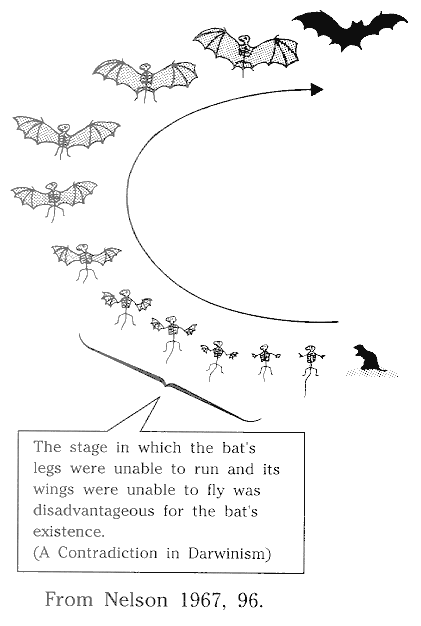
Fig. 11: The Imagined Evolutionary Path of the Bat
To deal with this problem, Stephen J. Gould, a representative American evolutionist, suggested the concept of "preadaptation." He said that, in the stage where a structure of a living being, useful for its existence, was still imperfect, that structure performed a different function. For example, fishes did not have jaws in the beginning; but the bones that had another purposethe bones that supported a gill arch located just behind the mouth-happened to be fit to become jaws. Therefore, those bones became jaws. Gould explains it: "The bones were admirably preadapted to become jaws" (Gould 1977, 108). Therefore, even in the stage where jaws were being formed, fishes did not have any trouble in their use, he says. We cannot but question the validity of such a view. As could himself admits, his concept of preadaptation cannot explain the formation of all the different complex organs.
I do not doubt that preadaptation can save gradualism in some cases, but does it permit us to invent a tale of continuity in most or all cases? I submit, although it may only reflect my lack of imagination, that the answer is no. (Gould 1980, 189)
Nobody has succeeded in reasonably explaining, by the theory of natural selection, the gradual stages up to the formation of exquisitely perfected and sophisticated organs.
Now, let us touch on the "theory of neutral mutation," advocated in 1968 by Sukeo Kimura, a Japanese geneticist. According to this theory, when the variations of a living being are seen on a molecular level, the majority of mutations are neither profitable nor unprofitable but neutral to living beings. In other words, mutations can be neither selected nor rejected by natural section-but are accumulated accidentally in the species through "random genetic drift." Such a neutral mutation becomes activated at some time to appear suddenly as a useful character.
The theory of neutral mutation is attracting world attention today, obtaining world acceptance, and has come to threaten the authority of Neo-Darwinism, which regards natural selection as almighty.
5. The Rise of Neo-Lamarckism
The Theory of Differentiation in Inhabitation denies the struggle for existence.
Darwin's theory of natural selection has something in common with Marx's materialism in its assertion that living beings are produced by the natural environment (which is material). Lamarckism, once denied by Darwinism (which advocates the theory of natural selection) is again being reconsidered.
The Japanese pathologist Isamu Usubuchi conducted an experiment in order to clarify the well-known fact that, in the chemical treatment of cancer, the cancerous cells become tolerant to the medicine used, and it becomes difficult to continue to use the same medicine for a long time. As a result, he said that it became proved that, "when cancerous cells come into contact with a medicine, a change in character occurs in adaptation to the medicine, and furthermore, it becomes hereditary" (Usubuchi 1985, 83). Based on the results of his experiment and on the results of an experiment by Kozo Okamoto (who artificially induced diabetes in a rabbit and a rat), Usubuchi concluded that the "inheritance of acquired characteristics" had been proved.
The points asserted by Usubuchi are the following
i) Living beings autonomously undergo change in their habits so as to adapt in such a way that they become adapted to change in the environment;
ii) A change in character occurs in correspondence with the change in habit;
iii) The change in character becomes hereditary.
Isinji Imanishi, who has been criticizing Neo-Darwinism for the past forty years, advocates "evolutionism of subjectivity," saying that living beings have a purpose and subjectivity. According to Imanishi, a species does not change in such a way that the better adapted will be selected and will remain; rather, the species will change as it is destined to do, in a relatively short period of time and as a whole, when it encounters a certain crisis. "A species changes into a new species by constantly remaking itself in order to adapt itself to the environment" (Imanishi 1976, 25), and living beings evolve through "directional mutation."
Imanishi has also discovered that the larvae of four kinds of mayflies differentially choose their inhabitation spots according to the difference in speed in river currents; based on that view, he advocated the "theory of differentiation in inhabitation." This theory asserts that the species that are close to one another differentiate their living fields and live in coexistence-which is different from the view that individuals engage in the struggle for existence and only those that are fit for existence survive, as Darwin had stated (see Fig. 12). Imanishi's theory of evolution, which attaches importance to the subjectivity of living beings, can be regarded as belonging to the school of Lamarckism.
Molecular biology now considers that individual species have a pool of potentialities within themselves, received hereditarily from the beginning, which enables them to change in various ways: As living beings experience various kinds of needs, their pooled characters (or potentials) come to appear. This can be understood to mean that living beings are endowed in advance with the ability to adapt themselves to various environments.
6. The Mystery of the Genetic Code
Genes can make a frog out of a frog's egg.
It is the function of the genes (DNA) that makes the eggs of a frog grow into frogs, and the eggs of a chicken, into chickens. The function of the gene is controlled by the information inscribed in the genes, namely, the genetic code. And it has been made clear that the genetic code is nothing but a pattern of arrangement in the DNA bases.
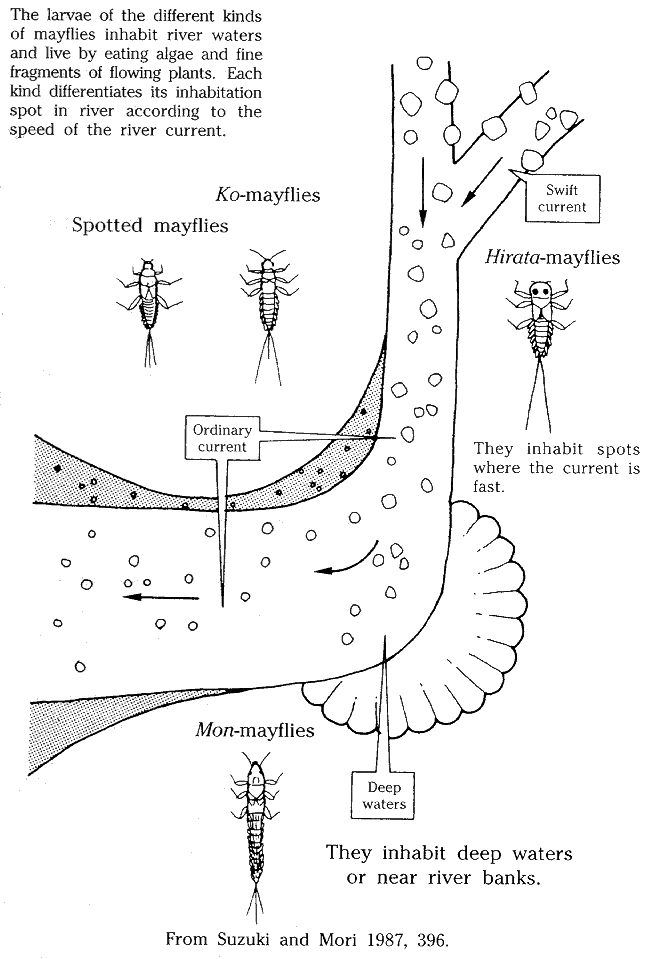
Fig. 12: Differentiation in Inhabitation of Mayfly Larvae
But nobody knows what gave origin to the genetic code, which has such an amazing content. The French molecular biologist Jacque Monod said, "But the major problem is the origin of the genetic code and of its translation mechanism. Indeed, instead of a problem, it ought rather to be called a riddle" (Monod 1971, 143). F. Hitching also said, "Biologists, it seems fair to conclude, are unanimously ignorant about the origin of the genetic code" (Hitching 1982, 55). Moreover, he also said that they are "amid doubts as to how it [the genetic code] was elaborated" (Hitching 1982, 61).
However, evolutionists claim that DNA, which possesses the genetic code, was generated spontaneously (by chance) and has been improved.
7. Gradualism under Question: New Species Emerge Suddenly.
Darwin's theory of evolution rests on gradualism, according to which an accumulation of minute variations leads to the formation of a new species. This means that living beings evolve smoothly and slowly.
But this gradualness of evolution is being questioned. In 1972, the American paleontologist Niles Eldredge and S. J. Could divulged the "theory of punctuated equilibrium." This theory asserts that a species usually passes a long period of equilibrium, during which the species remains unchanged; and then it undergoes a sudden change in such a way as to break the equilibrium. They reached that conclusion because they found the history of fossilized living beings to be quite incompatible with gradualism. Could suggests the following two features of fossilized living beings, which in effect deny gradualism:
i) Stasis: Most species exhibit no directional change during their tenure on earth. They appear in the fossil record looking much the same as when they disappear ; morphological change is usually limited and directionless.
ii) Sudden appearance: In any local area, a species does not arise gradually by the steady transformation of its ancestors; it appears all at once and "fully formed" (Gould 1980, 182).
What the theory of punctuated equilibrium explains is this:
Evolution occurs chiefly in a small group in an isolated, peripheral area because of topographical or climatic obstacles. Yet, the evolution of living beings in the peripheral area proceeds speedily ; therefore, seldom are living beings of an intermediate stage found in the form of fossils; generally speaking, only a group of individuals in the central area that is hard to evolve remains in the record of fossils. Therefore, the record of fossils tends to be static. And after a certain period of time has passed (in which evolution occurs), the descendants that have evolved move from the peripheral area to the central area and multiply. As a result, the fossils of a new species appear, all of a sudden.
The theory that, in order for a new species to be formed, a group with a new character has to be isolated was advocated by Moritz Friedrich Wagner (1813-1887). Mayr developed this theory and devised the mechanism of the species differentiation in an isolated group of the peripheral area. A group of individuals in the central area is stable and has great power to homogenize. Therefore, even if a new useful mutation may occur, that influence will be weakened-that is, the new character becomes weakened by crossing or hybridization. However, in a small, geographically isolated group at the peripheral area, natural selection works effectively, and thus there is a greater opportunity for the new character to be preserved. Therefore, the small group in the peripheral area tends to become different from the group in the central area.
A comparison between Darwinism and the theory of punctuated equilibrium is shown in Fig. 13.
As mentioned above, so many problems have been pointed out with regard to Neo-Darwinism. In spite of that, Darwinism is still alive. F. Hitching explains in his book The Neck of the Giraffe that Darwinism is now at an impasse; nevertheless, he warns that "those who see in this turmoil the death throes of Darwinism may be underestimating the monster's capacity for survival" (Hitching 1982, 225).
The reason why Darwinism survives is that people cannot accept the theory of creation in place of Darwinism. For example, Sir Arthur Keith said, "Evolution is unproved and unprovable. We believe it because the only alternative is special creation, and that is unthinkable" (Criswell 1980, 75). Prof. D.M.S. Watson, of the University of London, also said, "Evolution itself is accepted by zoologists, not because it has been observed to occur or can be proved by logically coherent evidence to be true, but because the only alternative, special creation, is clearly incredible" (Criswell 1980, 75).
According to fundamentalist Christian doctrine, creation took place in the period of six days, six thousand years ago; and it happened instantaneously. And Adam and Eve were created from the dust of the ground, instantaneously, as adults without a navel (Whitcomb 1972, 21-38).
Such a theory of creation is hard to be accepted by the common people today, when science has been so highly developed. And this difficulty comes from their attitude of interpreting the Bible literally. The Bible is not a direct and complete expression of the truth, but rather a textbook that teaches the truth. That is why the Bible was expressed in such terms that could be understood by the people of that time.
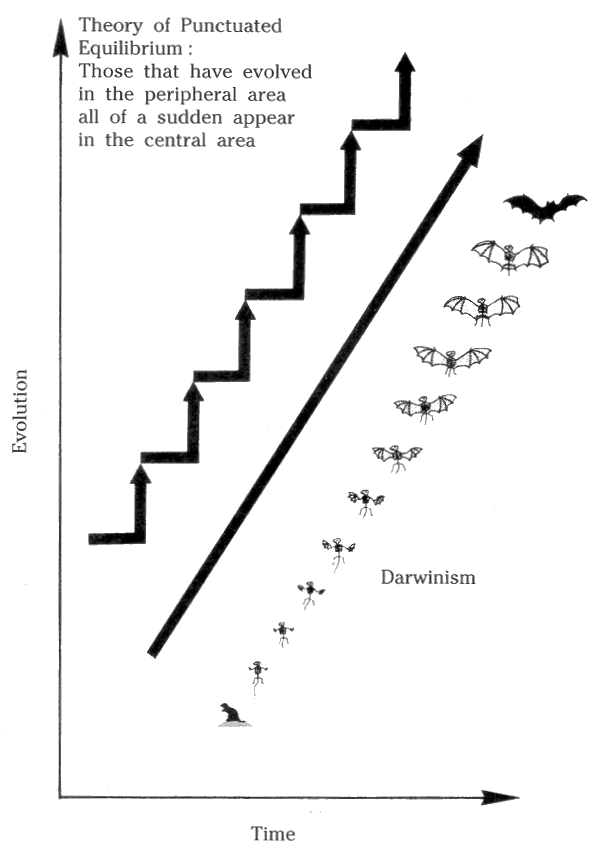
Fig. 13: A Comparison between Darwinism and the Theory of Punctuated Equilibrium
Accordingly, today it is necessary to interpret the Bible in such terms as to be understood by contemporary people, with their high-level scientific knowledge. From such a viewpoint, in the next chapter we will introduce a new theory of creation, based on Unification Thought, which is the thought advocated by the Reverend Sun Myung Moon.
Download entire page and pages related to it in ZIP format
Table of Contents
Information
Tparents Home